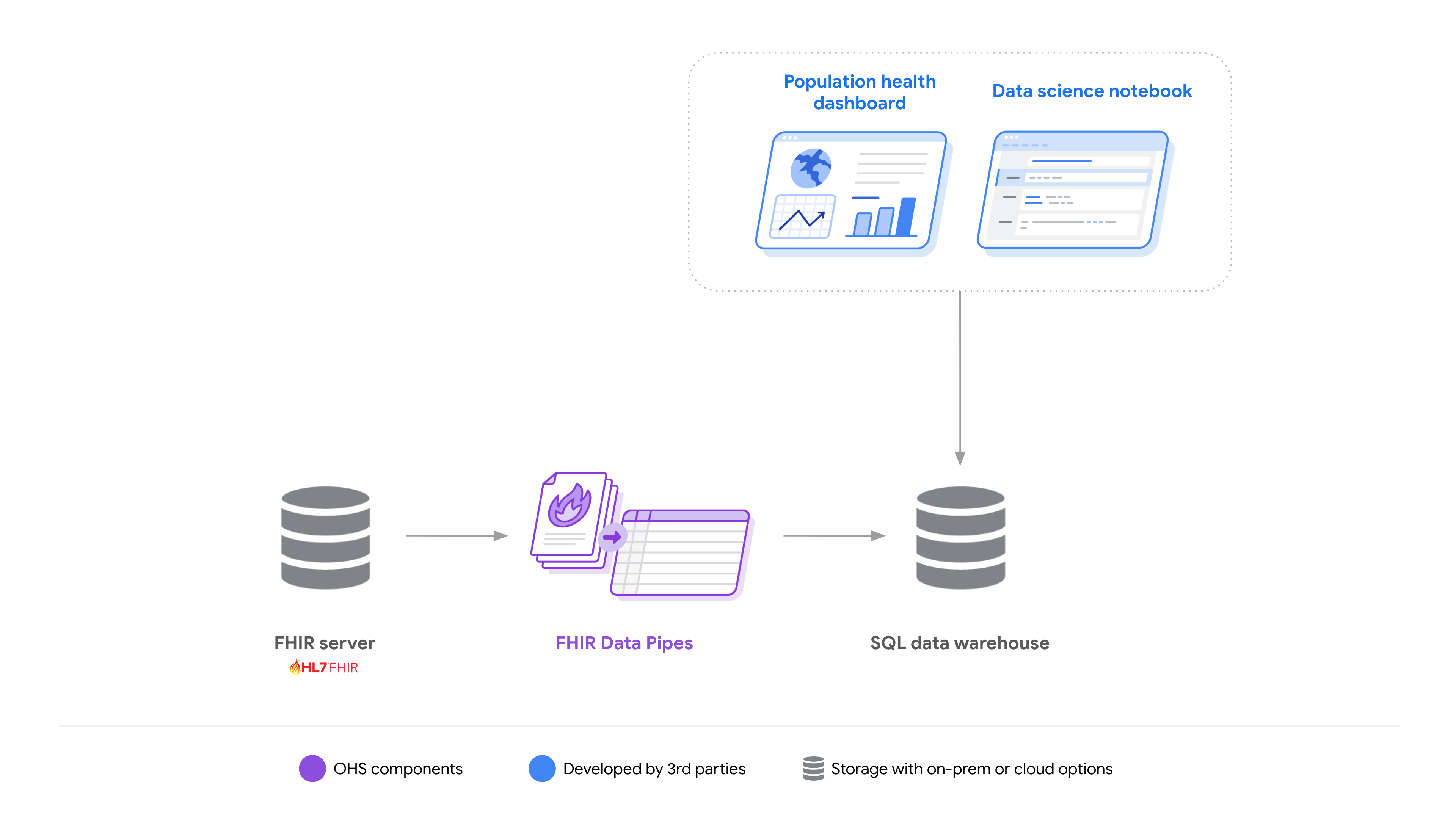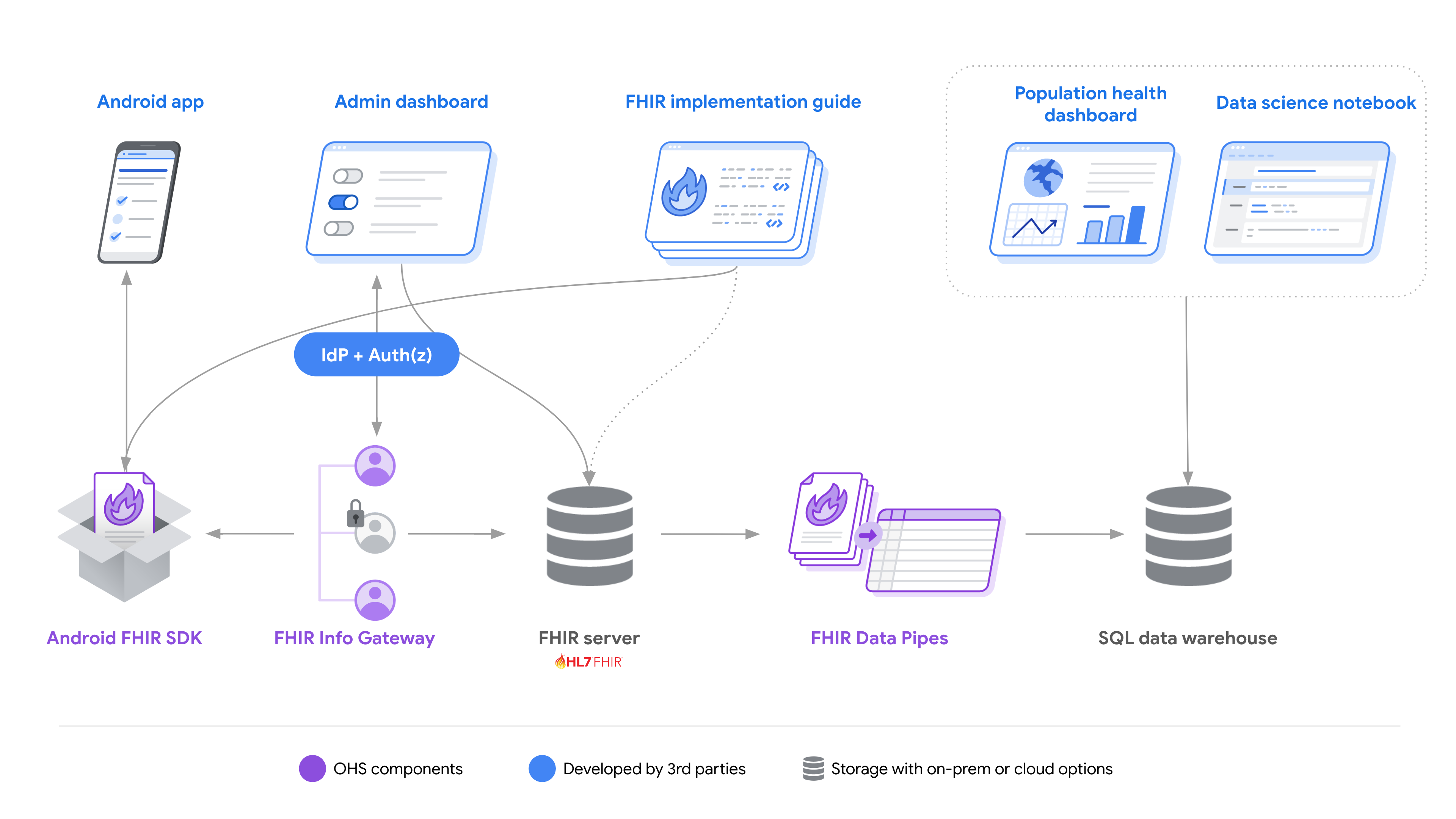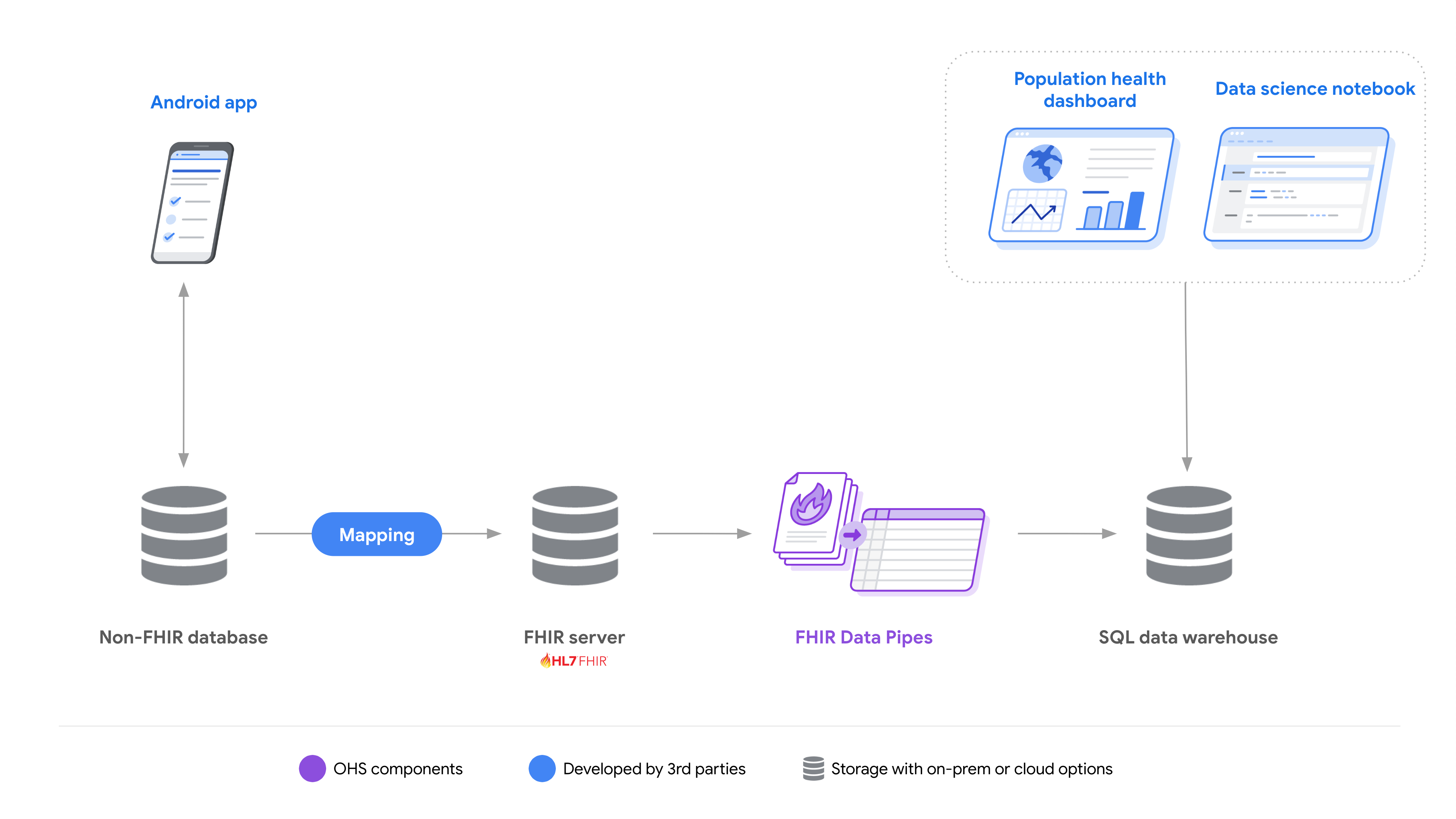Page Summary
-
Open Health Stack (OHS) components simplify FHIR adoption and can be used individually or combined for a comprehensive digital health platform.
-
Developers can build offline-first Android FHIR apps using the Android FHIR SDK, featuring Structured Data Capture, FHIR Engine, and Workflow libraries.
-
The FHIR Info Gateway enhances privacy and access control for FHIR applications, supporting SMART-on-FHIR integration.
-
FHIR Data Pipes streamline FHIR analytics by transforming data into an SQL-on-FHIR format for easier querying.
-
OHS components offer modularity, allowing integration with existing systems in hybrid architectures for data transformation and app development.
OHS components make it easier to adopt FHIR. You can use them separately or combine them to form the foundation of an end-to-end digital health platform.
FHIR-based Android apps
Using the Android FHIR SDK, developers can build FHIR native Android applications quickly. The SDK is a modular set of libraries designed to provide flexibility for a range of different use cases. These include using:
- the Structured Data Capture Library in an existing application to enable data collection via FHIR,
- the FHIR Engine Library to build offline first solutions on FHIR and,
- the advanced capabilities of the Workflow Library to enable CQL-based clinical decision support from WHO Smart Guidelines content.

Resources:
- Get started quickly with the SDC codelab.
- Read about how developers are building mobile solutions with OHS.
Enhancing privacy, leveraging SMART-on-FHIR
The FHIR Info Gateway is a stand-alone reverse proxy that you can deploy in front of any application to enhance privacy and make it easier to implement organizational access control policies. When used together with an Android FHIR SDK powered application the Info Gateway can also enhance sync operations, for example, to limit the patient data that a specific health worker can download and access when working offline.
As a stand-alone proxy, the Info Gateway supports integration with SMART-on-FHIR applications.

Resources:
- Explore the FHIR app examples repository to see how the FHIR Info Gateway can be used with other OHS components.
FHIR Analytics Solutions
Due to the heavily nested structure of FHIR data, writing queries to generate insights can be challenging. FHIR Data Pipes simplify the problem with an easily deployable and horizontally scalable pipeline that transforms FHIR data into an SQL-on-FHIR format, making it possible to query FHIR Data via SQL.

FHIR Data Pipes can be helpful where FHIR is the source of the data to be analyzed. Common scenarios for developers include:
- As an extension of a FHIR native mobile health solution - see foundations for an end-to-end digital health solution.
- As part of a stand-alone analytics solution that is leveraging FHIR - see hybrid architecture example.
Resources:
- Get started quickly with the single machine deployment tutorial.
- Explore the FHIR app examples repository to see how the FHIR Data Pipes can be used with other OHS components.
Foundations for an end-to-end digital health solution
Using all of the OHS components together provides a foundation for developers to build FHIR based platforms or solutions. By providing a number of core features—like sync and offline capabilities—and reducing the technical complexity of working with FHIR, developers can save significant time and focus more on the value-add of their solutions.

Resources:
- Explore the FHIR app examples repository to see how all of the components can be used together.
- Read about how Ona has used OHS to build OpenSRP FHIRCore.
Hybrid Architecture Example
OHS component modularity lets developers pick and choose the pieces that best help them solve specific problems.

There are many examples of where it could be beneficial to transition a part of an existing system to FHIR while maintaining other parts of the solution as they are. These include:
Non-FHIR data collection to FHIR based analytics: In this scenario, data collected in a non-FHIR way is transformed into FHIR to enable the use of the OHS FHIR Data Pipes for a common approach to generating insights from FHIR data. To transform data, developers can use existing vendor APIs, existing third party services such as the Global Goods approved OpenFn or leverage relevant open source projects.
FHIR Native app to Non-FHIR Systems: In this scenario, a FHIR native mobile app built using the Android FHIR SDK is used for offline care delivery with data synced to a FHIR Server. From the FHIR server developers could implement integrations with existing systems, third party adapters or custom code.
Resources:
- Explore the FHIR app examples repository to see how all of the components can be used together.
